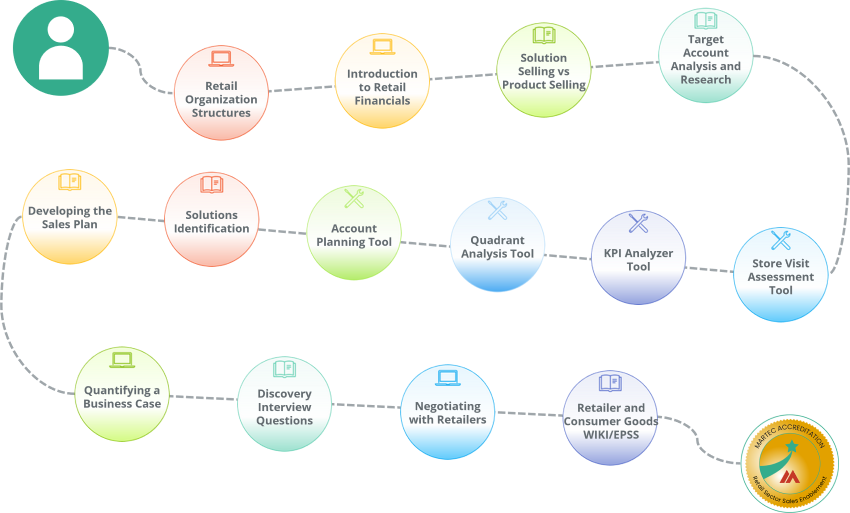Retail Sector Sales Enablement
Retail Sector Sales Enablement Learning Path
This learning path is for people in a sales enablement role. In these roles they have to design, teach and coach those in sales roles, so they need a deeper level of knowledge to accomplish this, commensurate with the knowledge levels of experienced pre-sales support people. This learning path builds on the Induction learning path.
Select any of the circles along the path to find out more about each step.

The Skills You Learn
By studying this learning path, consultants will gain these skills:
- Identify and articulate key trends in the retail industry of relevance to target accounts.
- List the major retail business formats and describe the differences between each one, including differentiating between year-round or category management formats and seasonal of merchandise management formats.
- Explain best practice retail processes in buying, merchandising, store operations, e-commerce, omnichannel retailing and retail marketing and contrast them against the processes used in the target account to identify opportunities to improve.
- Identify the differences between a target account’s IT applications architecture and that defined in the Quadrant Analysis.
- Analyze retail financial statements to identify potential ways to grow sales, increase achieved gross margins, reduce expenses, optimize inventory to achieve service level targets and improve cash flow.
- Research the retail organization of an account and identify the key senior management functions and their potential pain points.
- Perform target account research and analysis to identify further challenges, prioritize those that their company can address, and identify potential solutions.
- Develop a sales plan for the account to confirm whether suspect opportunities are real ones, plan approaches to the relevant executives, start initiatives to get meetings, and in conjunction with pre-sales support, create a list of meeting discovery questions for each potential opportunity. Identify appropriate solutions with the necessary detail to make a persuasive case.
- Identify the quantifiable benefit areas for each opportunity, the likely costs of delivery and implementation and prepare a draft return on investment case, to be further developed as the sale progresses.
- Plan a negotiating strategy with the account when the sales activities have proceeded far enough.
